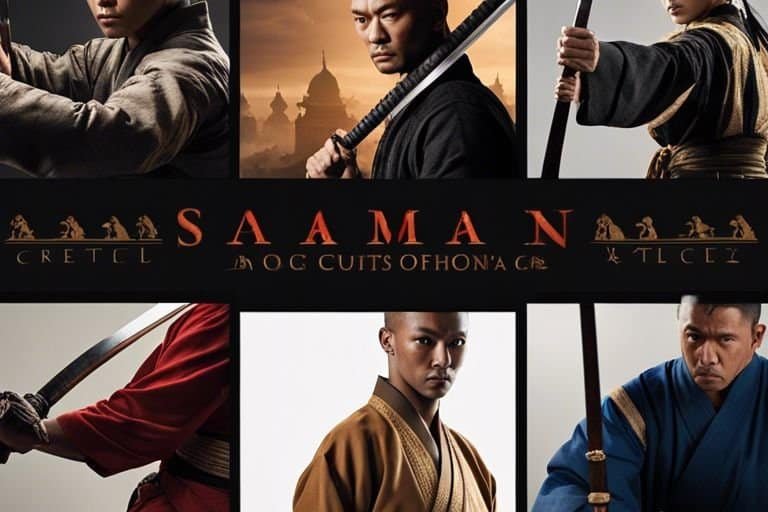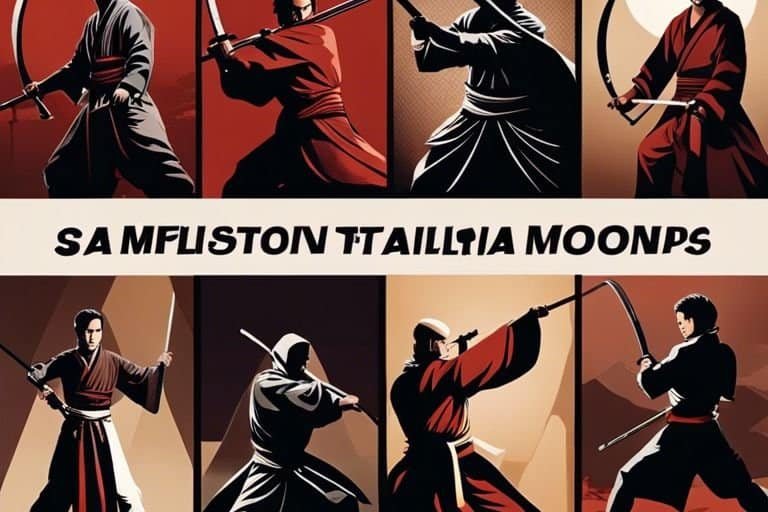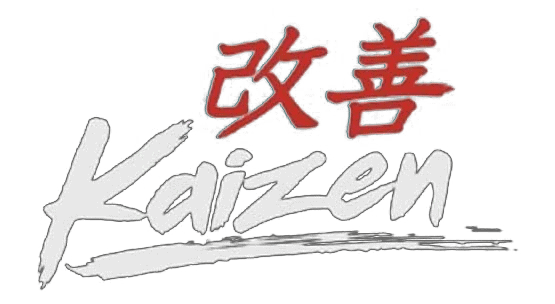Weapon training in martial arts is a fascinating and traditional aspect that holds great significance in various disciplines. For enthusiasts seeking to delve into the world of martial arts and weapons, it is crucial to understand which practices focus on this ancient art form. Weapon training not only hones physical skill but also instils discipline and mental focus. In this blog post, we will explore the types and history of weapon-focused martial arts, shedding light on the most prominent and revered disciplines. For a detailed insight into the origins and techniques of these martial arts, you can also check out our article on Weapon Martial Arts: Types & History.
Key Takeaways:
- Krabi Krabong: A martial art from Thailand that focuses on weapon training using weapons such as swords, staffs, and spears.
- Kendo: A Japanese martial art that centres around the use of bamboo swords and protective armour, with a strong emphasis on discipline and technique.
- European Swordsmanship: Various martial arts traditions in Europe that focus on historical European fencing techniques, including the use of swords, rapiers, and other medieval weapons.

Historical Perspective
When exploring the world of martial arts and weapon training, it is essential to delve into the historical perspective to gain a better understanding of how these practices originated and evolved over time.
Origin of Weapon-based Martial Arts
Weapon-based martial arts have a rich and diverse history, with their origins dating back to ancient civilisations such as the Greeks, Romans, and Egyptians. These early societies developed combat systems that incorporated a wide range of weapons, including swords, spears, and shields. The techniques and principles of these weapon-based martial arts were passed down through generations, evolving and adapting to suit different cultures and combat scenarios.
As societies progressed and encountered new adversaries, the need for refined weaponry and combat techniques became apparent. This led to the development of specialised weapon-based martial arts that focused on specific weapons, such as the Japanese art of Kenjutsu, which emphasised swordsmanship, and the Chinese art of Shuangdao, which specialised in the use of twin broadswords.
Evolution of Weapons in Martial Arts Training
Over time, the evolution of weaponry and martial arts training went hand in hand. Advancements in metalworking and technologies led to the creation of more sophisticated and diverse weapons, which in turn influenced the development of new combat techniques and training methods. The evolution of weapons in martial arts training also saw the integration of firearms and improvised weapons, adding new dimensions to traditional combat practices.
Furthermore, the evolution of weapons in martial arts training brought about a shift from purely practical and combative purposes to a focus on artistic and spiritual elements. This transformation gave rise to disciplines such as Kendo and Fencing, where the emphasis is not only on combat effectiveness but also on cultivating a sense of discipline, respect, and mental fortitude.
Key Martial Arts Focusing on Weapon Training
When it comes to martial arts that focus on weapon training, there are several disciplines that stand out for their rich heritage and effectiveness. If you’re interested in learning more about these weapon-based martial arts, you can check out The 10 Very Best Weapon-Based Martial Arts | Ultimate List for an in-depth look at the top choices.
Kendo: The Way of the Sword
Kendo, originating in Japan, is a martial art that focuses on using bamboo swords (shinai) and protective armour (bogu). The training emphasises precision, agility, and mental discipline. Practitioners develop their physical and mental strength through rigorous sparring and kata (forms) practice with the katana (Japanese sword).
With its roots in samurai culture, Kendo is steeped in tradition and philosophy. It emphasises respect for opponents and honing one’s character through the pursuit of mastery. The combination of physical and mental training makes Kendo a formidable martial art that is both challenging and deeply rewarding.
Filipino Martial Arts: Mastery of Sticks and Blades
Filipino Martial Arts, often referred to as FMA, encompass a wide range of traditional fighting systems that focus on using impact and bladed weapons. Practitioners of FMA learn to wield weapons such as sticks, knives, and bladed fans with precision and speed. These arts are known for their practicality and adaptability, making them highly effective for self-defence.
Filipino Martial Arts are deeply ingrained in the culture and history of the Philippines. The systems emphasise the use of everyday objects as weapons, reflecting the practical nature of the training. Many techniques are designed for close-quarters combat, making FMA a valuable skill for both armed and unarmed encounters.
For more in-depth information about Filipino Martial Arts and their various styles, techniques, and training methods, you can explore the comprehensive guide provided in the link above.
Iaido: The Art of Sword Drawing
Iaido is a Japanese martial art focused on the swift and precise drawing of the katana from its scabbard. Practitioners practise solo forms (kata) that simulate combat scenarios, emphasising the importance of timing, posture, and mental presence. The art of Iaido emphasises the value of remaining calm and composed under pressure.
The beauty of Iaido lies in its efficiency and deadly precision. The practice of drawing the sword and striking in a single motion requires intense concentration and control. Iaido is not just a martial art; it is a philosophy that teaches practitioners the value of patience and discipline in all aspects of life.
European Historical Martial Arts (HEMA)
Hema is a diverse collection of martial arts that originated in various European cultures, focusing on historical techniques and weapons. From longswords to polearms, practitioners of HEMA learn a wide array of combat skills and techniques. The training encompasses both armed and unarmed combat, providing a comprehensive understanding of historical fighting systems.
Hema is gaining popularity due to its emphasis on historical accuracy and practical effectiveness. The emphasis on studying manuscripts and historical sources gives practitioners a deep understanding of Europe’s martial heritage. Whether for sport or historical interest, HEMA offers a unique and challenging martial arts experience.
For more insight into the world of HEMA, including its diverse range of weapons and techniques, click on the link above for a comprehensive guide to this fascinating martial art.
Contemporary Practice and Its Challenges
When it comes to the contemporary practice of martial arts with a focus on weapon training, there are various challenges that practitioners and instructors face. With the increasing popularity of mixed martial arts and combat sports, traditional weapon-based martial arts have seen a decline in participation. However, there is still a dedicated community that values the significance of these ancient art forms. For those interested in exploring the wide range of weapon-based martial arts available today, the Top 26 Weapon Based Martial Arts List can serve as a valuable resource.
Maintaining Tradition in the Modern Dojo
One of the significant challenges faced by practitioners and instructors is maintaining the rich tradition and cultural heritage of weapon-based martial arts in the modern dojo. As the world continues to embrace modernity, there is a risk of these traditional practices being overshadowed by contemporary forms of combat. It is essential for instructors to emphasise the historical and cultural significance of these martial arts, ensuring that their students develop a deep appreciation for the lineage and tradition behind the techniques they are learning.
Safety, Sportification, and Cultural Preservation
Another crucial aspect of contemporary practice is the balance between safety, sportification, and cultural preservation. As weapon-based martial arts involve inherently dangerous techniques and training methodologies, there is a growing need to emphasise safety protocols without diluting the authenticity of these art forms. While sportification can attract new enthusiasts and foster a competitive environment, it is essential to strike a balance that honours the cultural and historical roots of these traditions.
Additionally, practitioners and instructors must navigate the complexities of preserving the cultural essence of these martial arts while making them accessible and appealing to a modern audience. This involves careful consideration of ethics, respect for tradition, and the integration of safety measures without compromising the authenticity and effectiveness of the techniques.

Which Martial Arts Focus on Weapon Training?
In conclusion, several martial arts focus on weapon training as a fundamental part of their practice. These include disciplines such as Kali, Escrima, and Silat from the Southeast Asian region, as well as Japanese martial arts such as Kendo, Iaido, and Kenjutsu, which focus on swordsmanship. Additionally, traditional Chinese martial arts like Wing Chun, Tai Chi, and Shaolin Kung Fu also include weapon training as part of their curriculum. These martial arts not only teach practitioners how to use specialised weapons effectively, but they also emphasise the principles of discipline, respect, and self-defence. As such, those interested in pursuing weapon training within the context of martial arts should explore these disciplines to find the one that best suits their interests and goals.
FAQ
Q: Which martial arts focus on weapon training?
A: Various martial arts focus on weapon training, including but not limited to Kali, Escrima, Kenjutsu, Kendo, Silat, and Gatka.
Q: What is the significance of weapon training in martial arts?
A: Weapon training in martial arts provides practitioners with an understanding of historical combat techniques, enhances physical coordination, and cultivates mental discipline.
Q: How does weapon training differ from unarmed martial arts practice?
A: Weapon training involves learning to use and defend against traditional and contemporary weapons, whereas unarmed martial arts focus on striking, grappling, and submission techniques.
Q: Are there any specific benefits of practising martial arts with a focus on weapon training?
A: Yes, practitioners develop heightened focus, precision, and timing, along with an increased sense of spatial awareness and strategic thinking.
Q: Can anyone learn martial arts with a focus on weapon training, or is it suitable for specific individuals?
A: Weapon training in martial arts is suitable for individuals of all ages and fitness levels, provided they receive proper instruction, guidance, and follow safety protocols.



